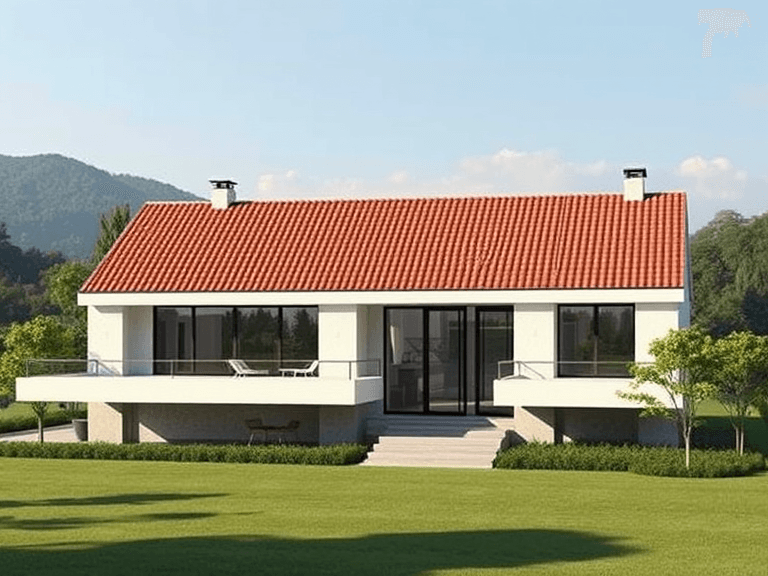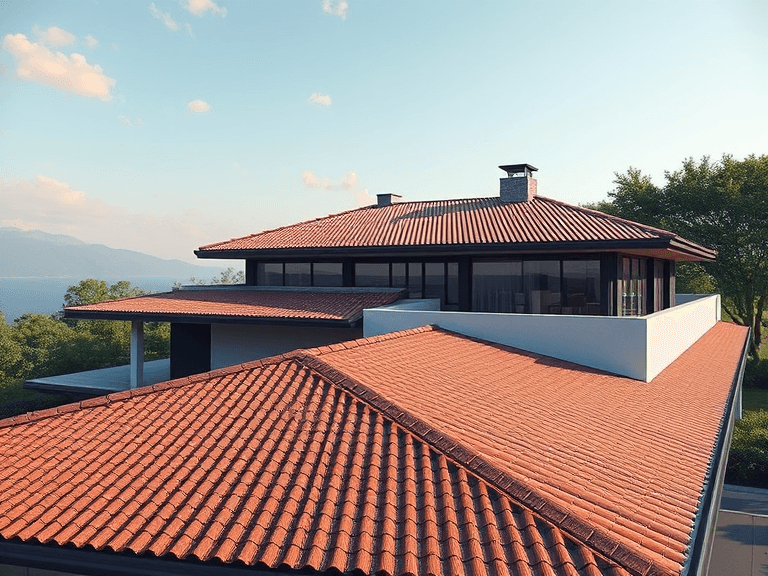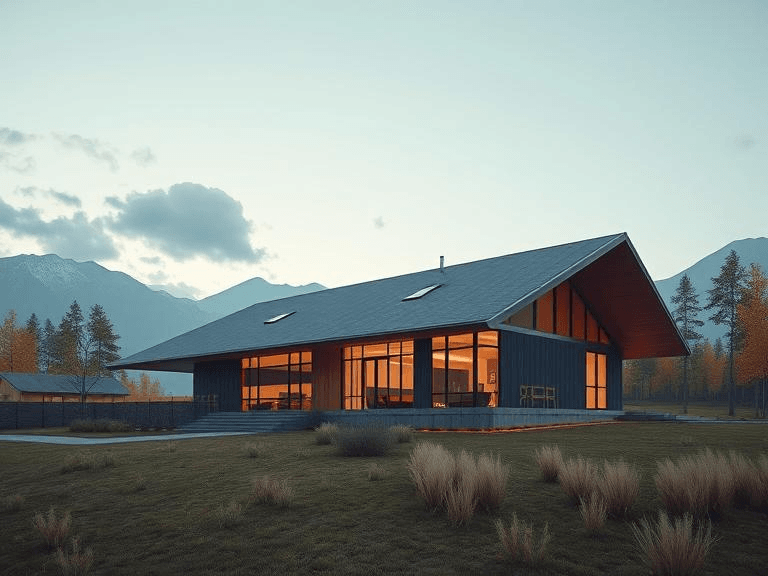
Roofing tiles play a pivotal role in any building construction, acting as a primary barrier against environmental elements while contributing to the aesthetics of a structure. The choice of roofing tiles can significantly influence the longevity and durability of a roof, making it imperative for homeowners and builders alike to select the most suitable materials. A durable roofing tile not only protects a building from rain, wind, snow, and UV rays but also withstands the test of time, ensuring that maintenance costs are minimized and the investment remains worthwhile.
Various materials are available for roofing tiles, each serving different aesthetic and functional purposes. Common options include clay, concrete, metal, wood, and slate. Clay tiles, known for their longevity and classic appeal, perform admirably in harsh climates. Concrete tiles offer excellent weight efficiency and can mimic the appearance of more expensive materials, while metal tiles provide superior durability and resistance to extreme weather. Wooden and slate tiles, though less common, still feature prominently for their unique aesthetic and enduring quality, though they may require more maintenance over the years.
When choosing roofing tiles, understanding the significance of durability cannot be overstated. Durable roofing tiles elevate not only the functional lifespan of a building but also its long-term value. This comprehensive guide will navigate the reader through the various factors involved in selecting roofing tiles based on durability. Topics will include analyzing different roofing materials, evaluating the environmental impacts, and understanding the implications of regional climate conditions. By the end of this post, readers will be equipped with the knowledge needed to make informed decisions when choosing the best roofing tiles for durability.
Factors Affecting Durability of Roofing Tiles
The durability of roofing tiles is influenced by a variety of factors, which play a critical role in determining their overall lifespan and maintenance needs. One of the primary elements affecting durability is the material composition of the tiles. Roofing tiles can be made from various materials, including clay, concrete, slate, and metal. Each material has distinct properties that contribute to its resistance against environmental stresses such as moisture, UV exposure, and temperature fluctuations. For instance, clay tiles are known for their longevity and resistance to fading, while concrete tiles offer excellent durability but may be prone to cracking under extreme temperature changes.
Weather conditions also significantly impact the durability of roofing tiles. Areas experiencing harsh weather, such as heavy snow, strong winds, or intense sunlight, require roofing materials that can withstand these challenges. In regions with a high likelihood of storms, tiles must be able to resist wind uplift and potential debris damage. Similarly, in coastal areas, salt air can accelerate the degradation of certain roofing materials, making it essential to select products specifically designed for such environments.
Furthermore, installation quality is paramount in ensuring the durability of roofing tiles. Poor installation can lead to misalignment, inadequate sealing, or improper flashing, all of which can compromise the roof’s integrity. A roof that is improperly installed may suffer from leaks and structural failures much sooner than one installed by qualified professionals. For example, if tiles are not adequately spaced to allow for expansion and contraction, they may crack or become dislodged over time. Therefore, both the choice of material and the care taken during installation can lead to significant differences in the performance and longevity of roofing systems.
Types of Roofing Tiles and Their Durability Ratings
When it comes to choosing the best roofing tiles for durability, various materials are available, each presenting distinct characteristics that affect their overall performance and longevity. The most common types include ceramic, concrete, slate, metal, and asphalt tiles, each boasting differing durability ratings and lifespan estimates suitable for particular environments.
Ceramic tiles, known for their classic appearance, offer significant durability, with a lifespan of 50 to 100 years. They are resistant to weather elements and do not fade easily, making them a suitable choice for regions with fluctuating temperatures. However, their weight may necessitate additional structural support.
Concrete tiles provide a blend of affordability and longevity, typically lasting about 30 to 50 years. These tiles are acclaimed for their robustness against high winds and fire. However, they can be porous, which may lead to cracking if not properly maintained, particularly in colder climates.
Slate tiles are among the most durable roofing options, exhibiting a lifespan of over 100 years. With their natural stone composition, they are resistant to both fire and water damage. Nevertheless, they can be expensive and require a reinforced roof structure due to their weight.
Metal roofing, including aluminum and steel tiles, has gained popularity for its durability, lasting between 40 to 70 years. Metal tiles are lightweight and can endure extreme weather conditions, making them an excellent choice for areas prone to storms. They also reflect sunlight, providing energy efficiency.
Asphalt shingles, often seen in residential areas, provide a more cost-effective option with a lifespan of around 15 to 30 years. While their durability is lower than other materials, advancements in manufacturing have enhanced their performance against the elements. They are most suitable for moderate climates but may require more frequent replacement in harsher environments.
In conclusion, when selecting roofing tiles, it is essential to consider the durability ratings and lifespan of each type, ensuring that the choice aligns with the specific needs of your environment. Proper maintenance and installation can significantly enhance the longevity of any roofing material, making it crucial to understand the unique attributes of each option before making a decision.
Climate Considerations for Selecting Roofing Tiles
When selecting roofing tiles, one of the most critical factors to consider is the climate of the area where the building is located. Different weather patterns can significantly affect the performance and longevity of roofing materials, making it essential to choose tiles that can withstand local conditions.
For regions prone to heavy rainfall and high humidity, roofing tiles made of materials such as clay or concrete may be preferred due to their ability to shed water effectively. These materials are also less susceptible to mold growth, which can be a concern in wetter climates. Conversely, areas that experience extreme heat may benefit from tiles that reflect sunlight, thus reducing heat absorption. Metal roofing tiles, for instance, can be advantageous in such climates due to their reflective properties, which help in keeping indoor spaces cooler.
Wind resistance is another important consideration. In areas subject to high winds or storms, roofing tiles need to be durable and well-attached to prevent damage. Certain materials, such as slate or concrete, are known for their wind resistance, while lightweight tiles may be more susceptible to being lifted by strong gusts. Additionally, tile shape and design—such as interlocking systems—can enhance a roof’s performance under adverse weather, providing extra security against flying debris.
Extreme temperature fluctuations can also impact roofing materials. For instance, significant thermal expansion and contraction can lead to cracking or loosening over time. Therefore, selecting roofing tiles that are designed to handle these changes, like certain synthetic tiles or high-quality concrete, can provide greater durability and longevity in such climates. Ultimately, an understanding of how climate influences roofing materials will help homeowners and builders make informed decisions when choosing the best roofing tiles for durability.

The Importance of Proper Installation
Choosing the best roofing tiles for durability involves not only selecting high-quality materials but also ensuring that they are properly installed. Proper installation is critical because it directly impacts the longevity and performance of the roofing system. A poorly installed roof can lead to several issues, including leaks, water damage, and reduced insulation capabilities, all of which can significantly reduce the lifespan of the roofing tiles.
One common installation mistake is improper alignment of the tiles. When tiles are not correctly positioned, it can create gaps that allow water to seep through, leading to premature deterioration. Additionally, inadequate fastening of the tiles can result in them being blown off during strong winds, compromising the protective layer over the underlying structure. Other frequent errors include neglecting to use appropriate underlayment and failing to account for the roof’s slope, both essential elements that contribute to the effectiveness and durability of the roofing system.
To ensure a quality installation of roofing tiles, it is paramount to hire qualified professionals who have experience with the specific type of tiles being used. Professionals can provide insight into the nuances of the installation process and help avoid common pitfalls that non-experts might encounter. Moreover, adhering to local building codes is essential, as these regulations often incorporate best practices for roofing installations inherently designed to enhance roof performance and durability.
In addition to hiring knowledgeable contractors, homeowners are encouraged to conduct regular inspections of their roofs following installation. This proactive approach allows for the early detection of any potential issues that may arise over time, ensuring that any necessary maintenance can be addressed promptly. By prioritizing proper installation, choosing the best roofing tiles for durability becomes a more effective endeavor that pays off in the long run.
Maintenance Tips for Long-lasting Roofing Tiles
Maintaining roofing tiles is crucial for extending their lifespan and ensuring that they continue to provide protection against the elements. Whether you have clay, concrete, or slate tiles, regular maintenance practices can significantly enhance durability. Homeowners should prioritize preventative measures such as regular inspections and timely repairs to prevent minor issues from evolving into major problems.
One of the first steps in maintaining roofing tiles is conducting routine visual inspections at least twice a year, ideally in the spring and fall. During these inspections, look for any cracked, broken, or missing tiles, as well as signs of algae or moss growth. These conditions can compromise the integrity of the roofing system if left untreated. If you notice any damage, it is advisable to consult a professional for timely repairs to ensure the longevity of your roofing tiles.
Cleaning your roofing tiles is another essential practice for maintaining durability. Homeowners should consider a gentle cleaning routine to remove debris, leaves, and algae. Utilizing a soft-bristle broom or a low-pressure washer can effectively clean the surface without harming the tiles. It is vital to avoid harsh chemicals that could degrade the tiles over time, opting instead for environmentally friendly solutions. Regular cleaning not only enhances the aesthetic appeal of the roof but also extends the lifespan of the roofing tiles by preventing the accumulation of harmful substances.
Additionally, ensuring proper drainage around the roof is fundamental to maintaining roofing tiles. Installing gutters and downspouts that direct water away from the structure minimizes water pooling, which can lead to tile deterioration. Proper ventilation in the attic also plays a significant role, reducing moisture buildup and the associated risks of mold and rot.
By implementing these maintenance tips, homeowners can effectively preserve the durability of their roofing tiles, safeguarding their investment and maintaining the structural integrity of their homes.
Cost Considerations and Value for Money
When it comes to choosing the best roofing tiles for durability, one cannot overlook the financial implications associated with various materials. The initial costs of roofing tiles can vary significantly, influenced by the type of material selected. Traditional options such as asphalt shingles tend to have a lower upfront cost, making them an appealing choice for budget-conscious homeowners. However, they may not provide the same longevity as higher-end materials, which can lead to more frequent repairs and complete replacements.
In contrast, materials such as slate, clay, or concrete tiles represent a more considerable initial investment. These roofing options, while appearing cost-prohibitive at first glance, offer superior durability. Slate tiles can last up to a century, while clay and concrete options also boast impressive lifespans of 50 years or more when properly installed and maintained. Thus, the long-term value of these roofing materials is significantly enhanced, as they require minimal repairs and are less likely to need replacing.
Investing in high-quality, durable tiles not only reduces the frequency of repairs but also minimizes the associated labor and material costs over time. Homeowners should consider the potential savings from avoided repairs, as well as increased property value, when assessing the overall cost of roofing materials. Additionally, options such as metal roofing tiles, while slightly more expensive upfront, can yield substantial energy savings due to their reflective properties.
Ultimately, while the initial cost is an important factor, it is essential to weigh it against the durability and longevity of the materials. Choosing the best roofing tiles based on these factors can lead to significant cost savings and enhanced property protection, resulting in a prudent financial decision for homeowners. Thus, the significance of understanding cost considerations when selecting durable roofing tiles cannot be overstated.
Sourcing Quality Roofing Tiles
When it comes to selecting the best roofing tiles for durability, sourcing high-quality materials is a critical step. The first place to consider is local suppliers and manufacturers, as they often provide products suited to the specific climate and conditions of your area. Visiting showrooms allows you to see samples of the tiles first-hand, offering a tangible sense of their quality and suitability for your project.
In evaluating suppliers, it is essential to assess their reputation. Look for established brands that have a history of providing durable roofing solutions. Reading customer reviews online can give valuable insights into the experiences of previous buyers. Websites such as HomeAdvisor or Angie’s List can provide comprehensive information and ratings for various suppliers. Additionally, consider seeking recommendations from industry professionals, including contractors and architects, who can guide you towards reputable brands known for their commitment to quality.
Understanding the warranties offered by manufacturers is also a crucial part of the purchasing decision. A strong warranty indicates confidence in the product’s durability and longevity. Look for brands that provide comprehensive coverage for material defects, as well as guarantees about performance and service life. This added assurance can significantly impact the overall value of your investment.
When exploring options, it is advisable to compare different suppliers and their offerings. Request samples or small quantities of roofing tiles to evaluate them further. Inspect the material for signs of quality such as thickness, weight, and finish, which directly relate to durability. Selecting the right source for your roofing tiles will ensure that you choose high-quality options that enhance the lifespan of your structure while meeting aesthetic preferences as well.
Conclusion and Final Thoughts
Choosing the best roofing tiles for durability is a critical decision that can significantly impact the longevity and maintenance of a property. Throughout this guide, we have explored various types of roofing materials, focusing on their respective durability, weather resistance, and overall lifespan. It is essential to evaluate each option carefully, as the longevity of roofing tiles can vary greatly depending on the material selected, local climate conditions, and installation quality.
Factors such as maintenance requirements, aesthetic appeal, and budget constraints also play vital roles in this decision-making process. From ceramic and concrete tiles, which offer long-lasting durability, to slate and metal options which can withstand extreme weather, understanding the unique properties of each material is paramount. Additionally, considering the potential for energy efficiency and sustainability can further enhance the advantages of specific roofing tiles.
Ultimately, the best roofing tiles for durability are those that align with your specific needs and environment. We encourage you to assess your priorities carefully—whether that involves focusing on resistance to local climate challenges or seeking an attractive finish that complements your home’s architecture. Your experiences and insights are invaluable, and we invite you to share them in the comments section below. Engaging with the community can provide additional perspectives and tips that may support others in their journey toward selecting the most durable roofing solution for their needs.


